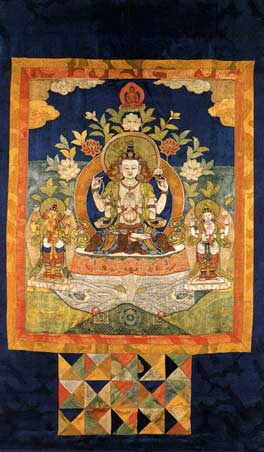|
Attention Training Exercises: Observation
Observation is an important component of attention. Attend to what you see, hear, smell, touch. Sharper sensing helps to focus attention.Everyday life offers many opportunities to observe and sense if you decide to do so.
Go for a walk outdoors in nature, in the woods, a park, the desert, the seashore, or anywhere outdoors. Walk, and look at the colors. Notice the difference tones in the sun and the shade. Do you see any interesting textures? Next turn your focus to sounds. Do you hear the wind in the trees or any birds singing? Or perhaps you hear people talking. Now focus on the smells, perhaps a fragrant flower, fresh-cut grass, or salty sea air. Let yourself notice what you observe, taking a little time to simply observe.
Another environment that is readily accessible for sensing is the grocery store. Such stores present many objects with intense colors, shapes, smells, and variety. For the purposes of training your observation, go to the store without buying anything, just to observe. Disregard brands, labels, or even what things are. Instead, can you notice the colors, patterns, and shapes of the containers? Try using your sense of smell to orient. Each aisle has characteristic odors and arrangements. How does it affect you? There is a close connection between sensory experiences and emotions. Note how the bright colors of containers, the lettering and packaging shapes, the brightly lit labels or sale tags catch your attention.
For an interesting comparison, try going to a supermarket that you have not been to before with a particular item that you want to buy. Note how your attention is affected and your reactions are changed when you have a goal in mind. You search for the item and discover that there are clear courses to follow. What is your experience of the people and things in the store? A task or project helps to focus the attention, and reaction times are affected. There is not, however, a way to subtract the human factor from the interaction. Your own feelings and point of view matter.
Inner and Outer Attention
Attention may be directed to inner or outer objects of consciousness. When you notice things about yourself, such as your sensations, feelings, thoughts, or beliefs, your attention is said to be turned inward. When you observe things around you, such as your house, your friends or family, nature or art, you may be said to be attending to the outer. Classical Zen theorists consider these distinctions to be meaningless, but from a Western orientation, it's a good place to begin. Try the following exercises to learn how to deliberately focus of your attention, inward or outward. In time, they meld into one, then return.
Outer to Inner Attention Exercise
Close your eyes. Sit comfortably. Pay attention to your outer surroundings. Can you feel the temperature of the room? Notice the quality of temperature: Is it warm, cool, or just about right?
Next, turn your attention from outwards to inwards, to the sensation of temperature on your skin. Does it feel warm or cool or right in between? Where do you notice your temperature most? Can you feel your face? Feel the temperature on your hands and arms. Are there any temperature differences between your face and your arms? Focus your attention on this until you can feel the temperature of the skin in several different areas. When you are finished, open your eyes.
You may vary this exercise, focusing on other sensations. Practice shifting from outer to inner
Attending to the Body
Meditation can be initiated through the mind or through the body. The mind and body are linked, each having influence upon the other. When you turn your attention toward your body sensing, a shift occurs that gives you new possibilities.
Some people are naturally more aware of their bodily experiences than others. You may wonder how to know when your muscles are relaxed. The answer is that you can feel a different sensation in relaxed muscles. The following exercises will help you to develop relaxation skills that you will use in some of the later meditation exercises.
Body Relaxation
Just as you can relax your mind, you can also relax you body. The next exercise will help you to relax through your body. These techniques have been used for thousands years in Hatha Yoga. If you follow all the instructions as best you can, you will find that your body relaxes more fully and that you gain more control over tension. While you can learn to relax specific areas of your body, it may be easier to start with the general, as in this exercise.
Lie down on your back on the floor, a supportive bed, or a couch. Close your eyes. Rest for a moment. Wait for a feeling of readiness. When you feel ready to begin, gently tighten all your muscles throughout your body. Tighten the muscles of your face, eyes, mouth, neck, shoulders, arms, legs, stomach, back, front&emdash;every area you can think of. Never tighten to the point of discomfort, but do contract your muscles. Hold for thirty seconds. Pay close attention to the sensation. Then let go all over, allowing your muscles to relax. Compare the feeling you have in your muscles now with how your muscles felt when tensed. After a minute or so, contract your muscles a second time. Hold them for twenty seconds, then relax even more fully than the first time. Tense one more time and then relax. Go back over areas of tension to release them. When you loosen your muscles for the final time, your whole body will be able to relax much more deeply. Try to let go of any residual tightness. Take a few moments to enjoy this deep relaxation. Practice regularly, and you will become more skilled in relaxation. Take each step one at a time.

|

